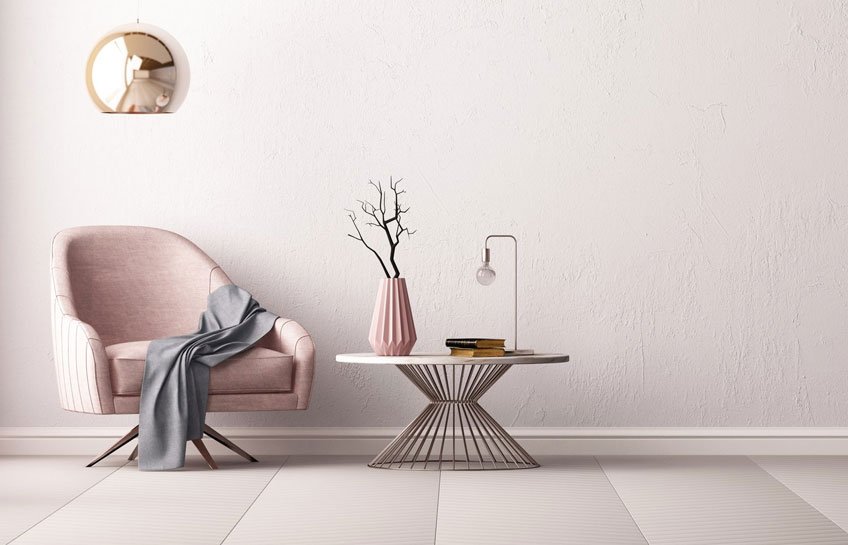When exploring a home design or renovation project, it’s easy to fixate on the “big ticket” items like layout, flooring, and paint colors while overlooking key details that tie the whole space together. However, it’s often the finishing touches and supportive elements that can take a home from mundane to magnificent. By thoughtfully integrating lighting, storage, furnishings, technology, and personal touches, you can create a tailored, functional environment that reflects your essence. With some foresight and planning, these overlooked essentials work in harmony with the structural components, yielding a cohesive and inspiring living space.
Understanding Space and Layout
The foundation for any well-designed home is an intentional, well-executed layout and floor plan. Beyond determining the placement of rooms, spatial planning ensures sensible traffic flow, facilitates furniture positioning, and enables activities from cooking to lounging. For smaller spaces like apartments or tiny homes, optimizing layout is especially important; even an extra few inches can make a difference in functionality.
Open Concept Living
Open-concept layouts have surged in popularity for their spacious feel and flexible usage. By knocking down walls between the kitchen, dining, and living rooms, the space feels more expansive and facilitates easier hosting and interaction. However, poor delineation can result in a chaotic atmosphere without careful planning. Using flooring changes, counters, railings, or ceiling differences to transition between zones creates a feeling of organization. Additionally, thoughtful furniture arrangement helps define areas while maintaining an unencumbered sightline.
Zoning for Multi-Generational Homes
For multi-generational households, well-defined zones cater to family members of all ages and abilities. For instance, locating the master suite on the main floor accommodates fewer mobile occupants while upstairs kids’ rooms allow for independence. Transitional lounge areas outside bedrooms also encourage socialization between generations. Even in open-concept designs, distinct activity areas tailored to residents’ needs promote both functionality and connection.
Tried and True Room Impacts
Certain classic layouts like galley kitchens and split bedroom floorplans endure for their clever space usage and logical flow. Galley kitchens feature two parallel countertops which reduce steps between the sink, appliances, and prep space. Meanwhile, separating master suites and secondary bedrooms simplifies morning routines and provides privacy. While trendy new configurations arise, time-tested plans optimize function and remain mainstays.
By objectively evaluating lifestyle needs from storage requirements to accessibility, purposeful layouts enhance day-to-day experiences. Keeping activities and relationships in mind while thoughtfully apportioning space provides the skeleton for a comfortable, common-sense home.
The Role of Natural Light
Beyond square footage and amenities, abundant natural light differentiates drab spaces from dream homes. Well-lit interiors simply feel more uplifting and inviting due to light’s emotional and visual impacts. Designing a lighting strategy involving size, quantity, and placement of windows along with supplemental elements like skylights and reflective surfaces can brighten your home.
Psychology of Light
Visible light, especially from natural sources, has repeatedly been linked to improved energy, mood, and focus. As winter days grow shorter, many even suffer from light deprivation. Integrating plentiful light sources combats the winter blahs; strategically placing brighter accents in high-traffic zones like kitchens or home offices helps maintain motivation. Additionally, framing views of nature keeps the outdoors within reach, while avoiding direct southern exposure minimizes overheating and glare.
Maximizing Exposure
Since natural light originates from the sun, orienting the house and thoughtfully designing windows facilitate illumination. For example, north-facing windows may offer soft, even light throughout the day while southern exposures provide abundant daylight. Skylights and clerestory windows in interior halls spread light deeper into a home, supplemented by reflective surfaces like light paint colors and strategic mirror placement. For optimal ambiance, vary the size, height, and orientation of windows while considering fixtures like blinds and drapes to control glare and heat gain as needed.
Lighting Consistency
Keep in mind how the arc of the sun impacts lighting over a day. Rooms may appear bright and airy in the morning only to seem dark and gloomy by late afternoon. Observe how natural light shifts throughout the seasons and supplement accordingly with fixtures like lamps and sconce lights. Programmable and automated options allow customization for day or night use for the perfect balance.
By thoughtfully planning for plentiful light exposure tailored to a home’s unique architecture, residents can bask in the glow all year long. Abundant natural light paired with supplemental fixtures results in warm, welcoming spaces bursting with sunshine.
Color Schemes and Psychological Impact
While seemingly superficial, a home’s color palette profoundly impacts its atmosphere and even the mood of occupants. Colors contain cultural associations and psychological properties that trigger reactions, both conscious and subconscious. Cool blues and greens evoke tranquility reminiscent of water or nature, while warm reds and oranges reflect passion and comfort. Strategically wielding chromatic elements create customized spaces that not only appeal aesthetically but also elicit desired responses.
Energizing and Soothing Effects
Much like lighting strategies, the thoughtful application of color schemes transforms mundane spaces into vibrant, mood-enhancing backdrops. Incorporating brightly saturated hues in active zones like kitchens or home gyms energizes and motivates users. Conversely, neutral beige or muted blue-grey tones in bedrooms promote relaxation and sleep. Even those skeptical of psychology must admit that bright red dining spaces encourage lively dinner conversation while pale green studies aid concentration. Thus color selection directly impacts experiences within a thoughtfully decorated home.
Cohesion Over Chaos
Most interiors employ a color palette involving one or two dominant hues supplemented by accent shades that provide depth without chaos. For example, steel blue walls might coordinate with navy furnishings and peach throw pillows. Generally, limiting the main hues establishes cohesion while sprinkling in accents adds personalized flair. Ensure accent colors harmonize through a shared undertone, intensity, or temperature for a polished look. Creative application of color creates focal points and guides the eye toward décor instead of conflicting patches.
Psychology of Color
| Color | Psychological Effect | Recommended Rooms |
|---|---|---|
| Red | Passion, Energy | Dining, Gym |
| Orange | Cheer, Warmth | Living, Kitchen |
| Yellow | Clarity, Vibrance | Office, Bathroom |
| Green | Tranquility, Healing | Bedroom, Study |
| Blue | Calm, Relaxation | Bathroom, Bedroom |
| Purple | Creativity, Spirituality | Office, Living |
| White | Purity, Airiness | Throughout |
| Grey | Balance, Sophistication | Living, Bedroom |
| Black | Mystery, Elegance | Accent |
While seemingly superficial, thoughtful wielding of a home’s color palette profoundly impacts its atmosphere and occupants’ moods. Balancing lively saturation in active zones while embracing muted hues in private spaces customizes the backdrop to match experiences. Through artful choreography of color, you stage a show-stopping performance instead of a lackluster production.
Durable and Aesthetic Materials
Beyond paint, homes comprise varied materials from flooring and counters to siding and fixtures that endure years of living. While aesthetics matter, longevity and durability should also guide selections or replacements to become imminent. Research appropriate applications and expected wear to strike a balance between form and function when evaluating options. Consider sheen, texture, and pattern for visual interest but also favor materials that withstand family life.
Know Appropriate Applications
Certain surfaces outperform others in specific spaces, like moisture-resistant shower surrounds that prevent erosion and leaks. However, even all-purpose options have limitations – for example, porous grout easily stains without sealing. Thoroughly research prospects’ suitability elsewhere to circumvent premature replacements. Consult experts in showrooms and read manufacturer guidance to fully understand ideal applications before committing.
Assess Durability
When selecting flooring, research expected wear ratings, thickness gauges, and composition for resilience. Laminates and vinyl planks outperform hardwoods for family spaces but come in varying durability grades. Likewise, natural stone rivals porcelain tiles’ longevity if properly sealed for water resistance. Thicker carpet piles withstand more foot traffic without matting but eventually require replacement. Look beyond beauty to determine which facelift-free materials support your lifestyle.
Blend Form and Function
While durable surfaces keep replacement costs down, aesthetics matter for enjoyment and home values. Fortunately, technology advances expand options that fuse resilient substances with stylish designs. For example, porcelain plank flooring offers a woodgrain appearance with unparalleled stain-, scratch- and moisture resistance. Durable quartzite countertops flaunt crystal speckles rivaling luxurious marbles without intense sealing needs. Fortunately, balancing beauty and brawn grows increasingly possible with wise planning.
By methodically evaluating materials’ resilience, ideal applications, and design elements, homeowners furnish homes to admire for years instead of mere months. Aligning favorites with functions facilitates enjoyment while minimizing repairs and budget-draining upgrades down the road.
Furniture and Space Harmony
Furnishings must masterfully balance purpose and poise, enhancing comfort without cramping layouts. Beyond beds, seating, and storage, décor defines spaces’ essence through cohesive embellishments. When thoughtfully selected, household furniture not only serves residents but also adds personality. Craft furniture vignettes that enrich spaces through considered scale, functional furnishings, and attractive accents.
Scale and Balance
Even in expansive homes, oversized furnishings overwhelm rooms, rendering them disorganized and cluttered. Seek poise and balance by mimicking proportions seen elsewhere while allowing breathing room. In living rooms, anchor mid-sized sofas or sectionals facing focal points like fireplaces without overwhelming flow for foot traffic. For dining, round tables optimize seating capacity and conversation connectivity. Regardless of square footage, right-sized furnishings keep rooms relatable and livable.
Multifunctional Pieces
Given limited space in modern construction, furniture must multitask across needs from seating to storage. Coffee tables with lift-tops reveal hidden storage for remotes while bench seating offers slippery shoes a home. For small spaces, Murphy beds transform offices into bedrooms in moments utilizing vertical real estate for improved flexibility. Daybeds accommodate guests while banquettes inside breakfast nooks integrate dining with window seating. With creativity, furnishings adopt identities like chameleons to serve varied functions.
Curated Character
Arranging furnishings into thoughtfully composed vignettes creates pockets bursting with style and personality. In living rooms, angle seating towards fireplaces to create intimate conversation nooks warmed by the hearth’s glow. Display favorite novels and travel mementos on layered coffee and side tables for the character. Even modest households transform into chapels of self-expression through the artful arrangement of curated belongings that reveal their owner’s essence.
Thoughtfully furnishing homes to nurture inhabitants requires balancing scale, function, and embellishments. Right-sized, multifunctional pieces work in harmony with considered layouts for liveability while infusing rooms with customized charm through personal adornments. The resulting style sings like customized concertos composed just for you.
Personal Touches and Decor
As vital as floorplans and finishes, a home’s personal touches and decorative accents transform houses into cherished havens. Beyond basic furniture, beloved nicknacks, artworks, textiles, and heirlooms inject character while illustrating life’s defining moments. Thoughtfully exhibited treasures and hand-selected embellishments put the home homey, celebrating memories and milestones through meaningful design.
Storytelling Through Design
Above functional spaces, consider homes the sacred grounds where life unfolds, from first steps to celebrations. Surround yourself with cherished moments and the items that commemorate them to curate an inspirational capsule of memories. Showcase travel souvenirs like handwoven baskets or vintage maps as art. Display inherited china or delicate teacups passed down generationally. Frame children’s artwork alongside painstaking oil scenes and graceful watercolors by favored artists for a multidimensional mélange.
Thematic Touches
To supplement cherished mementos, incorporate new décor that aligns with interests from nature and astronomy to classic films or foreign locales. Nature lovers might display taxidermic butterflies or pressed flower art while stargazers accessorize with metallic constellation prints and celestial objects. Movie buffs frame iconic movie posters and props for theatrical flair. No matter the passion, embellish spaces with decorative elements tied to hobbies for joyful, personalized permanence.
Curating Visual Interest
Strewn indiscriminately, tchotchkes clutter spaces; thoughtfully exhibited they captivate and inspire. Maintain balance by limiting knickknacks to designated accent tables, selecting cohesive color palettes, and clustering favorite themes or materials. Accentuate with artistic lighting like vintage marquee signs or fabric lampshades. When selectively celebrated, even quirky collections impress as museums of what moves you most.
Our homes shelter lives’ most precious moments – from first steps to celebrations, heartbreaks, and new beginnings. Surround yourself with decorative touches that commemorate your dearest memories and inspirations to curate a soul-soothing artistic oasis. When sincerely assembled, ordinary houses transform into extraordinary sanctuaries.
Innovative Storage Solutions
No home functions properly without ample, well-designed storage to organize life’s assorted stuff. Beyond bedroom closets, homes require myriad dedicated zones to corral everything from linens, sports equipment, and tools to pantry overflow. By creatively employing architectural elements like stair nooks or attic trusses paired with customizable standalone units, order emerges from chaos.
Architectural Opportunities
Take advantage of often overlooked spaces to integrate discreet storage solutions while minimizing clutter’s visible footprint. Tuck pull-out drawers under bathroom sinks for extra toiletries room or conceal ironing stations behind hallway mirrors. Install built-in bookshelves flanking fireplaces to handle overflow libraries or collections. Many companies offer modular storage components like drawers, shelves, and rods to populate awkward angled areas under stairs and eaves. Become an architourist to identify and equip dead spaces for storage wins.
Customized Standalone Solutions
Supplement built-ins with adaptable organizational systems designed for specific contents from wine to tools. Start by analyzing storage needs from sports equipment to pantry overflow then measure available space for furnishings. Track lighting brightens collections displayed on adjustable library bookcases while rollout canvas trunks easily access off-season clothes. In the laundry room, drawer tower units provide specialized compartments for soap pods to ironing supplies. Taking time to identify needs and research innovations streamlines even the most awkward content.
Maintaining Harmony
Storage loses its power when units overwhelm rooms with mismatched visual chaos. Seek cohesive finishes that coordinate with wall colors like white melamine organizers in soft grey rooms or wooden hutches in rich walnut tones spaces. Install lighting above display collections to create spotlighting drama against neutral backdrops. Though unseen, carefully integrated storage solutions operate behind the scenes to enable rooms to shine.
Every household contains contents essential for everyday life but difficult to organize within standard closet confines. Identifying needs and then creatively employing architectural opportunities and customizable storage systems clears clutter and restores order to even the most chaotic abodes. Who knew household harmony depended so heavily on the thoughtful integration of storage solutions?
Smart Home Technology Integration
Once reserved for futuristic mansions, integrating smart home technology into new builds and renovations gains increasing popularity and affordability. Beyond basic internet-connected thermostats and video doorbells, smart homes allow control and automation ranging from lighting and music to window coverings and appliances. When thoughtfully planned as part of the home design, technology seamlessly integrates into aesthetics and architecture for simplified living.
Planning for Adaptability
Since innovations rapidly advance, consider wiring homes with flexibility and futureproofing in mind regardless of square footage. Preinstall in-wall speakers and ethernet cables even if unused initially to simplify incorporating sound systems or computer networks down the road without messy retrofits. Choose fixtures and appliances equipped for automation upgrades through modules or firmware updates for simplified adoption of new capabilities over time. Consider smart hubs which consolidate and voice control connected devices through one centralized application. Build robust behind-the-scene infrastructures to handle tomorrow’s solutions.
Minimizing Visual Impacts
One smart home pitfall involves gadgets that appear out of place, interrupting elegant aesthetics with plastic screens or unsightly cords. Seek devices with minimalist footprints that recede into décor instead of announcing their presence. Sleek LED light panels, recessed power outlets, and touchscreen deadbolts maintain sophisticated appearances. Alternatively, conceal hubs inside closets or basements while controlling everything conveniently through phones or tablets. The savviest smart homes artfully disguise cutting-edge advancements within attractive decor.
Enhancing Convenience and Security
Clever integration improves quality of life by handling mundane tasks and enhancing peace of mind. Program lighting configurations for various occasions from dinners to late nights while customizing temperatures for optimal comfort whether home or away. Integrate doorbell cameras for increased security and cooking appliances activate remotely so meals finish perfectly timed to arrivals. Auto-opening blinds adjust natural light exposure while watering systems maintain lush landscapes with minimal effort. Properly incorporated, home technology simplifies chores to free up valuable personal time.
Smart homes gracefully handle life’s daily drudgeries through automated conveniences all while maintaining gorgeous aesthetics. With robust core infrastructure coupled with adaptable minimalist components, residences readily embrace both today’s and tomorrow’s advances.
Conclusion
Creating cohesive, livable homes requires attending to oft-overlooked details like space planning, storage, and technology in addition to flashy finishes and furnishings. Thoughtfully balancing form and function facilitates spaces allowing the personalized pursuit of passions and pastimes. Ensuring adequate natural light, incorporating cheerful hues, and displaying cherished keepsakes transforms bland boxes into joyful, inspiring havens. With holistic planning, overlooked essentials unite with eye-catching elements into harmonious interiors customized for your best life. Though challenging, through mindfulness of layout, flow, form, and function, you construct the foundation for meaningful moments building dreams one memory at a time within your thoughtfully designed refuge. What once seemed like merely choosing paint colors expands into an art form rich with capabilities to compose your legacy room by room.




No Comment! Be the first one.